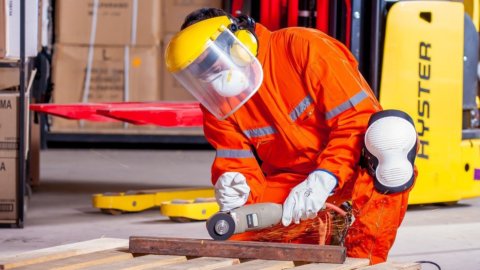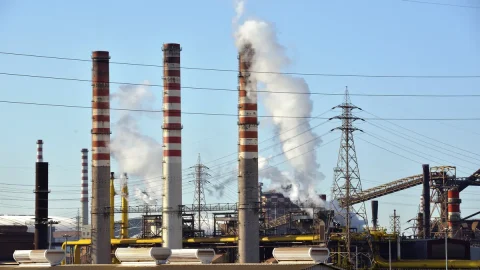In 2019, the turnover of Italian industry will return to pre-crisis levels, i.e. 2007, 12 years ago. On the other hand, for consumption (which will continue to support domestic demand, even if in the coming years less and less than foreign demand) we will have to wait until 2022, while for employment (in industry) it is not known, but at the moment the balance compared to 2007 it is still negative: -9%. These are some of the data that emerged from the Asi Report (Analysis of industrial sectors), produced by the Intesa Sanpaolo study center and by Prometeia e presented in Milan.
The report shows that the Italian manufacturing industry archived a positive 2017, with a growth in turnover of 2,9% at constant prices, which however is about to give way to a less brilliant period, with a physiological cyclical retreat of the request. “The peak of growth has already passed – said the Chief economist of Intesa Sanpaolo, Gregorio De Felice -: however, this does not mean that now we will plunge back into a crisis. The cycle will slow down, especially in Europe, but will remain positive”. In fact, in 2018 Italian industry will continue to grow, but by 2,4%, to then fall back again to +2,1% in 2019, according to Intesa-Prometeia forecasts.
In the period 2020-2022 there should be a further slowdown, with industry growing below 2%. “The trend is consistent with the growth rates of world GDP, which in 2018 was +3,9% and will continue to increase in 2020 but by 3,5%”, explains De Felice. The Eurozone will also go from the current +2,3% to 1,5% in 2020-22, with China from +6,3% to +5,2% and the US from +2,8% to 1,9%. In short, nothing to worry about, also because the report speaks of a well-established growth process, based on solid fundamentals: “Today there are fewer companies than before, there has been a selection but the surviving ones are decidedly stronger, more competitive, increasingly larger in size”. Moreover, thanks also to the reforms of recent years, investments have grown, profitability has been recovered and financially there is more capital solidity.
Among the reforms that have not been implemented, however, the age-old one of the tax wedge remains, which keeps the problem of employment alive more than ever. “The balance – explains the Chief economist of Intesa Sanpaolo – is -9% compared to 2007, with Germany holding at -2,3%. Only in four sectors has employment recovered: food&beverage, mechanics, chemistry and large-scale consumption, and pharmaceuticals”. For all the others, the balance is largely negative, despite the phenomenon of reshoring, i.e. the return of companies to produce in Italy.
Another major criticality highlighted by the relationship conducted in partnership with Prometeria is that of labor productivity: Italy is definitely bringing up the rear in Europe, with general productivity increasing by only 5% from 1998 to 2017, while Countries like Germany recorded +24% and Spain and France are also doing much better than us. “We even have sectors where productivity has decreased, such as construction with -17% and professional services even with -31%. It is precisely the productivity of industry that keeps us on our feet, which marks a +22,8%: less than that of our competitors, but with an acceptable gap”.
In the next few years, therefore, Italian industry will continue to enjoy good health, albeit refusing its breath: in 2022 it will bring the trade balance to exceed 115 billion euros, from the current 90. The protagonist of this further leap will once again be the Mechanics, currently the healthiest sector (in 2018 it will see turnover rise by 4,2%, much more than the average) and which will contribute 11 billion out of a total of 25 billion of further surplus between now and the next four years. “The figure is very positive – explained De Felice – above all if we consider that in 2007, before the crisis, our trade surplus was 30 billion. It will basically be four times bigger."
The liveliest sector, as mentioned, will continue to be Mechanics, but all sectors will do well, with the exception of two: Electrical Engineering and Household Appliances. “In the first case – explained Alessandr Lanza of Prometeia – the difficulty is due to a now greatly reduced production base, while as far as household appliances are concerned, we will be penalized by the high international competition“. For all the other sectors, however, there will be elements of concern, which the Report has only potentially taken into account, not being able to take them for granted.
In first place among the fears, in addition to theItalian political uncertainty which is already agitating the markets, there is a possible escalation of protectionist pressures. “In reality – said Lanza – at this stage it is worrying because with the new US administration recourse to protectionism has become unpredictable. But already with the previous administrations there was this tendency. The US has lagged behind China, which is now no longer a competitor only in terms of labor costs, but is in effect a technological competitor".
Geopolitical tensions are also worrying: Russia, Korea, and most recently Iran. “A possible escalation in Iran – argued Lanza of Prometeia -, which we did not consider in the study anyway, would have a consequence increase in the price of oil and consequently of other commodities and it would greatly penalize our historically intense trade relations with Tehran". Furthermore, possible news on currencies and above all on monetary policies should not be underestimated, with an upward trend in interest rates already underway in the United States.
"In any case, the industry will continue to grow - concluded De Felice - on the strength of both internal demand (which however will decrease, causing imports to reduce as well) and exports, which will continue to exist despite a general drop in demand in global trade . Investments will mainly support domestic demand, great absentees from the 2008-2022 period and now back substantial thanks to some reforms in recent years”. Industry 4.0, hyper depreciation, the Jobs Act. We have returned to producing and investing, but not hiring. And it is no coincidence that industry will contribute less and less to the growth of the country's GDP, to the advantage of services which already in 2017 created 1,1% of the total +1,5% of GDP.
These services are largely related to technology: the big news is that Italian companies are increasingly digital and innovative. But, unfortunately for job seekers, we invest almost exclusively in robotics. As CAGR (added value) produced from 2012 to 2016 by 4.0 patents we are in 14th place in the world with +23%, ahead of countries such as Finland and Canada for example. But if it is true that we are far behind on sectors such as Big Data, Cloud computing and the Internet of Things, it is equally true that we have staked everything on robotics, on which three out of four patents are oriented. In China it represents 17% of patents 4.0, in India 19%, in European countries and in the USA around 45-50%.





